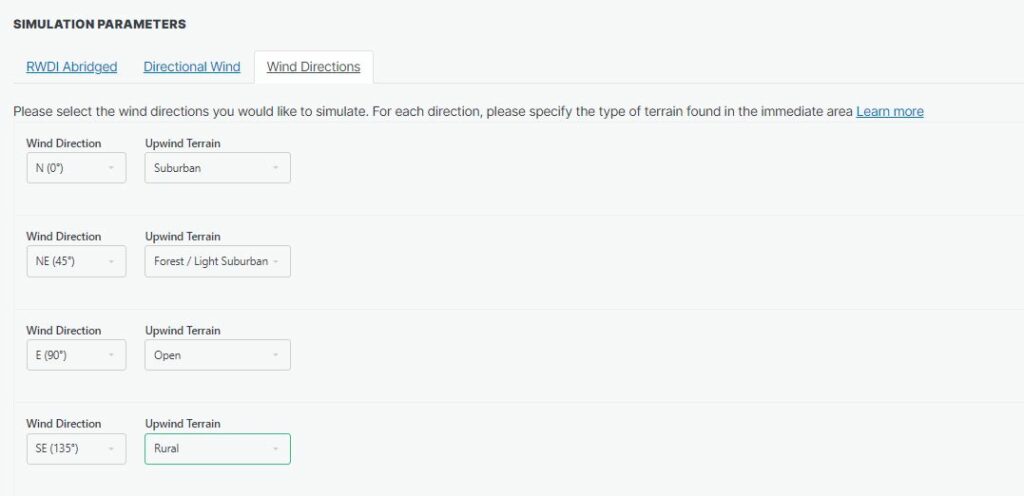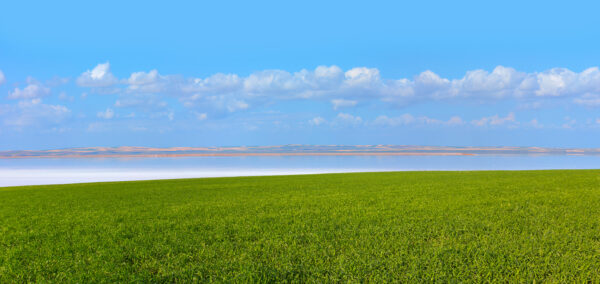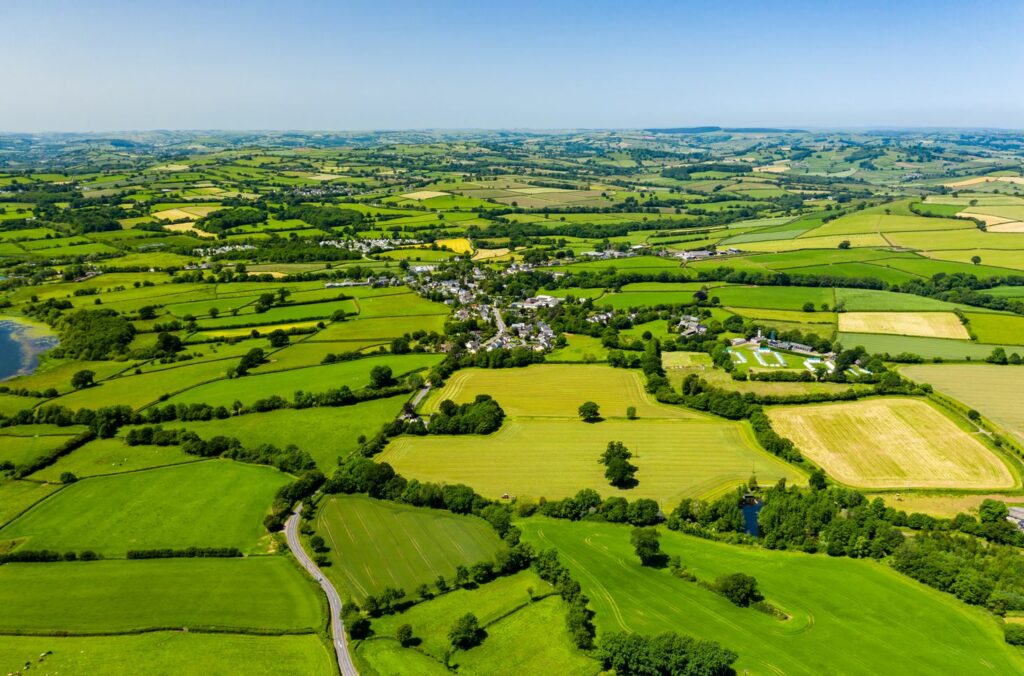When submitting a new scenario, you will be required to choose the Wind Directions for your analysis as well as the Terrain types found in the areas adjacent to your project site.

Choosing Wind Directions
In general, choose a minimum of 6 wind directions up, however 8 are preferred. Choosing 8 directions help ensure that you have some statistical confidence in the combined Pedestrian Wind Comfort results.
Choosing Terrain Type
Selecting terrain types for each direction provides a more fine-tuned analysis representative of the site area. Choosing the appropriate terrain is important because of how wind interacts with the environment. For each selected wind direction, determine the terrain type between 300 and 2000 meters away from the site. For this, we recommend referring to satellite imagery (e.g. via Google Maps).
Below is a description of each of the terrain options to choose from:


Open Water
Z0 = 0.005
(microclimate simulations)
alpha = 0.11
(cladding simulations)

Open: Unobstructed and flat areas, ideal for small bodies of water, fields, or parking.
Z0 = 0.03
(microclimate simulations)
alpha = 0.15
(cladding simulations)

Rural: Slightly obstructed areas, ideal for farmland or scattered low-rise buildings.
Z0 = 0.1
(microclimate simulations)
alpha = 0.17
(cladding simulations)

Forest / Suburban: Partially obstructed areas, ideal for wooded areas, parks, and suburban single family (one to two story) residential.
Z0 = 0.3
(microclimate simulations)
alpha = 0.21
(cladding simulations)

Light Urban (PLW Only): Obstructed area with tightly packed residential (two/three story) and occasional multi-story buildings. Ideal for medium density cities with some large buildings.
Z0 = 0.5
(microclimate simulation)

Urban: Highly obstructed area, ideal for high density cities two to five story buildings with the occasional high rise.
Z0 = 1.0
(microclimate simulations)
alpha = 0.29
(cladding simulations)

Skyscrapers (PLW Only): Significantly obstructed area, ideal for very high-density metropolises with towers. (e.g. Manhattan, New York; Hong Kong)
Z0 = 3.0
(microclimate simulations)